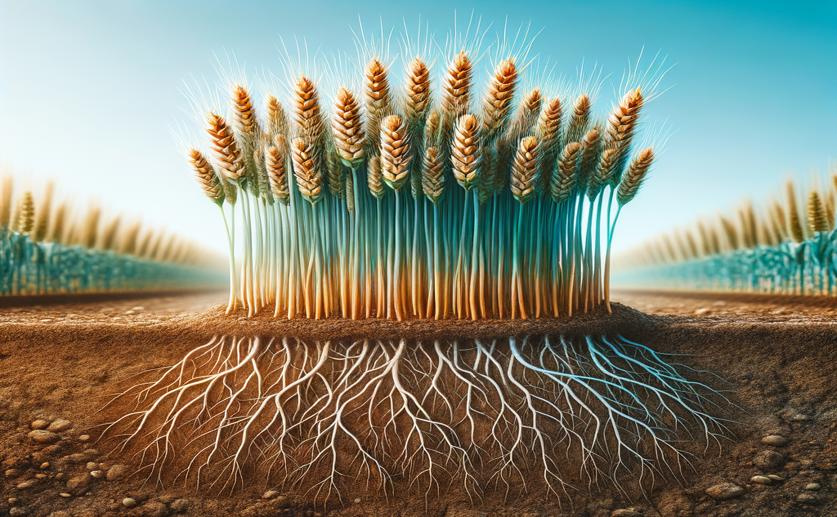
New Semi-Dwarf Trait in Wheat Created by Layered Genetic Changes
Jenn Hoskins
10th May, 2024

Image Source: Natural Science News, 2024
Key Findings
- Scientists at Rothamsted Research studied how certain wheat genes affect plant height and crop yields
- They found that mutations in the GA20OX2 gene can create shorter, sturdier wheat plants without reducing yield
- These findings could help breed new wheat varieties that resist falling over and potentially improve food production
AgricultureGeneticsPlant Science
References
Main Study
1) Stacked mutations in wheat homologues of rice SEMI-DWARF1 confer a novel semi-dwarf phenotype
Published 9th May, 2024
https://doi.org/10.1186/s12870-024-05098-1
Related Studies
2) 'Green revolution' genes encode mutant gibberellin response modulators.
Journal: Nature, Issue: Vol 400, Issue 6741, Jul 1999
3) DELLA protein functions as a transcriptional activator through the DNA binding of the indeterminate domain family proteins.
4) Gibberellin-induced DELLA recognition by the gibberellin receptor GID1.



 30th April, 2024 | Greg Howard
30th April, 2024 | Greg Howard